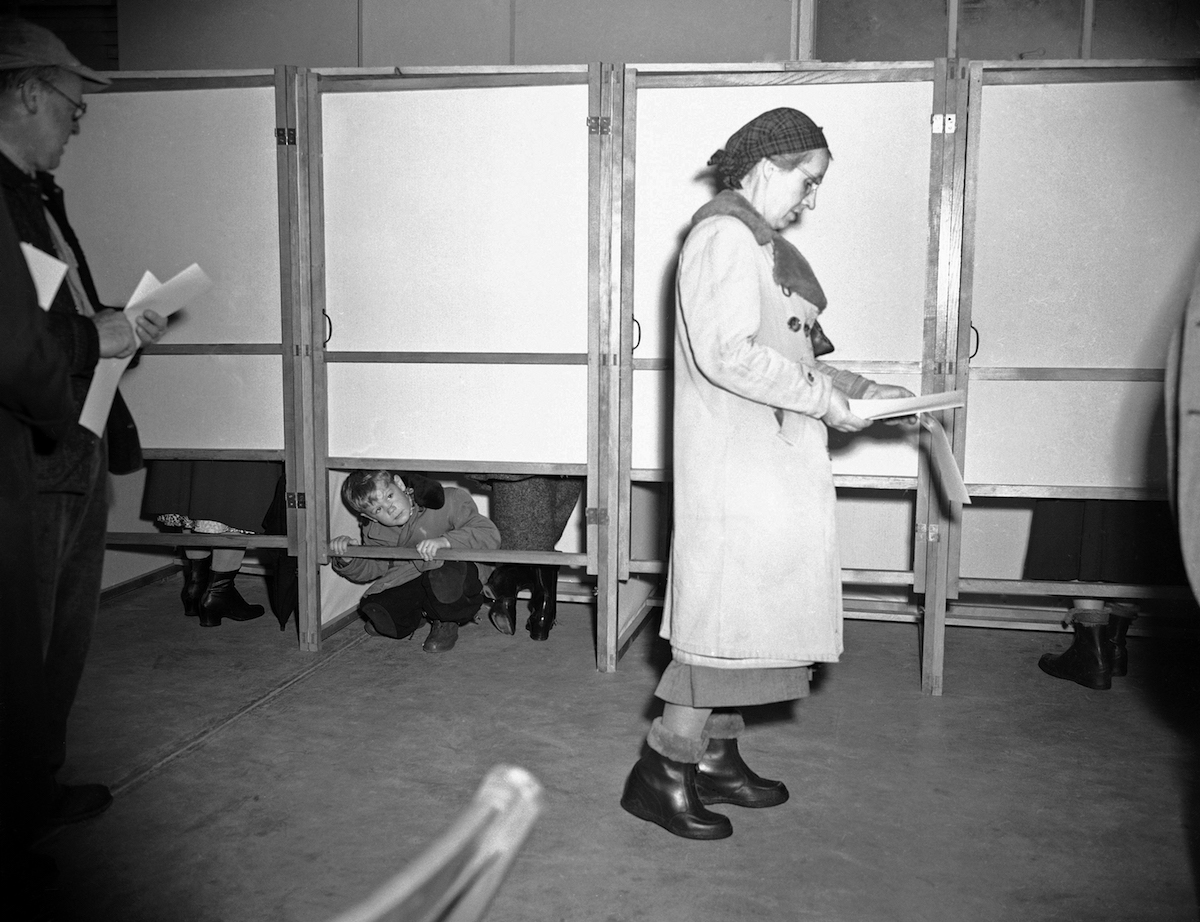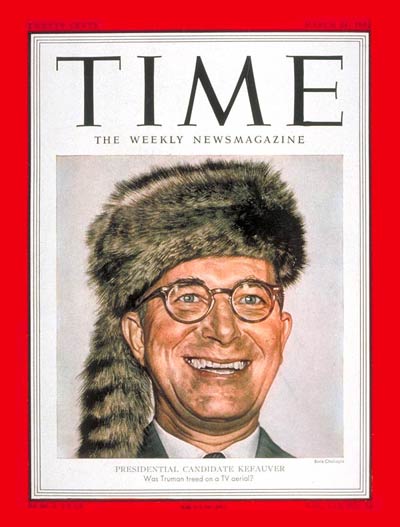
A lot is at stake when New Hampshire primary voters head to the polls Tuesday: Donald Trump is hoping to make good on his high poll numbers after failing to do so in Iowa, Hillary Clinton is contending with Bernie Sanders’ home-region support and the rest of the crowded GOP field is preparing for a difficult–and snowy–day. But the Granite State was not always such a presidential player.
Although New Hampshire was among the early states to experiment with presidential preference primaries in the early 20th century, it was not until 1952 that its formative role was established.
The first reason was the timing of the vote. The third month of the year—after the worst of winter but before spring farming work began—was already the time for the state’s annual town meetings, so it was simple convenience to combine the two, as explained by David W. Moore and Andrew E. Smith’s history of the state’s primary. Gradually, as other states shifted their schedules, New Hampshire’s March date became the first primary on the campaign schedule.
Then, there was the format. For the first decades of the contest’s history, voters hadn’t been able to express their preference for an actual candidate. As was the case in many other states, they were just selecting their delegates for the party convention. Because delegates were often active in local party politics, it was common for them to decide—post-primary—to vote for whomever the party selected. As a result, voting in the primary was largely symbolic. By the late 1940s, however, state politicians decided it was time for a change. In 1949, the New Hampshire legislature decreed that primary ballots would also include candidates’ names. The selection was non-binding, and was thus derided by some as a mere popularity contest, but it was still a rare chance for voters to tell the elected delegates whom they would like selected at the convention.
Sure enough, in the very next presidential election, New Hampshire got a chance to show the nation that their primary was worth watching. It was first, and it was a referendum on the actual candidates, as TIME noted in February of 1952:
Tiny New Hampshire (pop. 536,000) is normally little more than a speck on the politicians’ map of the U.S. It will send numerically unimportant delegations to the national political conventions; 14 to the Republican, eight to the Democratic. But last week politicians and pundits from coast to coast were carefully adjusting their fine tuning to get a good, 21-in. view of what is going on there. On March 11, New Hampshire will have the first presidential preference primary of 1952.
Finally, there was a heady mix of candidates. Gen. Dwight Eisenhower and Sen. Robert A. Taft were the two top contenders for the Republican nomination that year. On the Democratic side, President Truman had said it wasn’t even worth putting his name up for a primary that had no direct bearing on the national nominating conventions. After all, he was the incumbent and he was confident about winning over the delegates he would need should he decide to run. Bowing to pressure from New Hampshirites, however, Truman allowed his name to be put on the ballot. His opponent was the upstart candidate Sen. Estes Kefauver, a quirky progressive known for wearing a raccoon-skin cap and riding a dogsled. Pundits at the time observed that perhaps the move was an attempt by the Democratic establishment to prove that Kefauver stood no chance.

It quickly became clear, however, that Truman was no shoo-in. And sure enough, come primary week, it was Kefauver—not Truman—on the cover of TIME, having surprised the press and the party by running away with the primary. Likewise, on the Republican side, Eisenhower, who was still on NATO assignment in Europe, upset establishment favorite Taft seemingly without trying.
Not a month later, Truman announced that he would not seek reelection. The reasons were many, but his own loss and Eisenhower’s win in New Hampshire were not incidental: Kefauver had shown that running would mean a real fight, and Eisenhower had shown—in an across-the-aisle twist that might shock observers today—that there was a chance the next President would be both a member of the other party and someone Truman liked. That, of course, was what ended up happening, after Kefauver eventually lost the nomination to Adlai Stevenson.
In 1952, the New Hampshire primary had it all: it was first, it was a new format and it clearly affected the rest of the race. Washington and the rest of the country tuned in to watch, and they’re watching still today.
More Must-Reads From TIME
- The 100 Most Influential People of 2024
- Coco Gauff Is Playing for Herself Now
- Scenes From Pro-Palestinian Encampments Across U.S. Universities
- 6 Compliments That Land Every Time
- If You're Dating Right Now , You're Brave: Column
- The AI That Could Heal a Divided Internet
- Fallout Is a Brilliant Model for the Future of Video Game Adaptations
- Want Weekly Recs on What to Watch, Read, and More? Sign Up for Worth Your Time
Write to Lily Rothman at lily.rothman@time.com